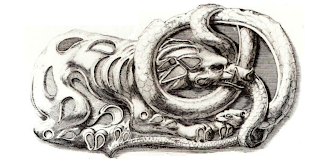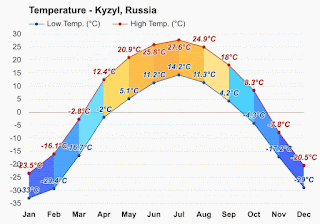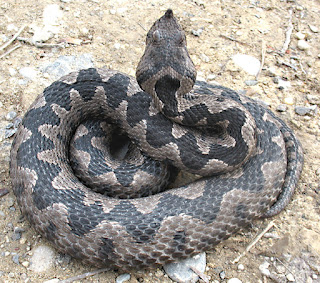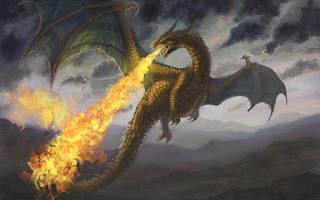This is one of 250 decorative gold objects made by the Eurasian nomads between the 7th c. BC and 2nd c. AD, in the so called "Scythian-Siberian animal style"...which are part of the "Siberian collection" of Peter I which was assembled in the early 18th c...
Now there is something very strange about this object...The wolf is not really a wolf...You can see more clearly what I mean on this drawing made one century before the Siberian collection was assembled...
This is not the drawing of the belt buckle from the collection of the Peter I. It is a drawing of another belt buckle, most likely a part of a pair, from the Nikolaas Witsen collection...Depicting a mirror image of the scene from the belt buckle from the Peter I collection...
Nikolaas Witsen was a Dutch scientist and cartographer, who visited Russia in 1664-1665. He wrote about his trip in a book "Northern and Eastern Tartaria" where this drawing appear...
In this first detailed depiction of Siberia (Tartaria) in Europe, Witsen also wrote about the gold objects which were at that time dug out of the ancient Siberian burial mounds...
Apparently, looting ancient Siberian burials for gold was a big business at the time...No one knows what was found and lost...The belt buckle from the drawing was one of the objects Witsen "collected" or bought from the "collectors" for himself...
Here are the drawings of both buckles:
L: Nikolaas Witsen collection R: Peter I collection.
Drawing from this page which compares these two collections...
You can see that the "wolf" is actually a composite animal, with the body and the head of a wolf and the snout (and a tusk) of a wild boar...
So...Composite animal...Mythical beast? Or a complex animal calendar marker? 🙂
So what are animal calendar markers? Well these are ancient animal symbols used as calendar markers to mark the time when the depicted animal mates, gives birth, migrates, hibernates...
They were most likely devised by the first farmers in the Fertile Crescent, maybe 15,000 years ago, although there are some indications that they could be even older, developed in Palaeolithic Europe, and then brought to Fertile Crescent during last Ice Age...
Anyway, these animal markers were in the Fertile Crescent used to create first agricultural calendar...The reoccurring annual events important for agriculture were marked by the animals that mated, or gave birth, or migrated, or hibernated...at that same time...
For instance:
Rains arrive when ibex goats are mating.
Flood arrives when auroch cattle are calving.
Snow starts melting when leopards start mating.
The hottest and driest part of the year is when lions start mating.
And so on and so forth...
The first farmers brought this agricultural calendar with them, as they were spreading through Eurasia and North Africa. Amazingly, over time these animal calendar markers became deified...And became base on top of which all Eurasian and North African mythologies are built...
More about ancient animal calendar markers, start here then check the rest of the blog posts I still didn't add to this page, and finally check my twitter @serbiaireland threads I still didn't convert to blog post...I am 7 months behind now...
Back to the belt buckle...
So what about our belt buckle then? What do the animal calendar markers (snake, wild boar, wolf) depict? Well to understand this we need to look at the climatic year in Central Siberia, and particularly the temperature...See, two halves: hot (+30) and cold (-30)...
So, snake...
Snake is a solar animal, which is in our world when sun is in our world: during the day and during the hot part of the year...Which is why it was in this ancient calendar, used as a solar symbol and the symbol of the hot half of the year...I talked about this in many of my posts, for instance "Enemy of the sun", "The chthonic animal", "Bactrian snakes and dragons"...
Dragon of a fire breathing variety, is just "an old snake", just a "snake that has looked at the sun for a long time"...Dragon is basically just a symbol of the late summer, the hottest and (usually) driest part of the year, the time of droughts...I talked about this in many of my posts, for instance "Dragon who stole rain", "Seven headed dragon", "Winged superhuman hero", "Is that you Gilgamesh"...
If you are interested in mythology where dragon is a water animal, because the hottest part of the year is also the wettest, check these articles out about Chinese dragons: "Chinese dragon", "Tiger and dragon"...
So we have a snake/dragon as a symbol of the hot part of the year...Fighting with a composite creature, part wild boar (mating season Nov-Jan), part wolf (mating season Jan-Mar)...
As you can see the animals forming "The enemy of the snake/dragon" mate during the winter, and are used widely as symbols for winter, the cold part of the year, when snakes are nowhere to be seen...They are killed (forced underground into hibernation) by their "mythical enemy"...Cold winter...
And if we look at the "mythical animal", we can see that the wild boar (snout, tusk) actually marks the beginning of winter and the wolf (head, body) marks the end of winter...
So...I believe that here we have a symbols of two opposing halves of the Central Siberian climatic year, hot summer and cold winter...Depicted through animal calendar markers...
PS: Here is another article about an artefact done in "Siberian animal style" with every single animal depicted having its mating season during the winter, which why it is being used as an animal calendar marker for winter...I talked about it in my post "Tasmola talisman"...










The wolf and boar hybridization is interesting. It made me realize how similar Turkic name for wolf "Börü" sounds similar to the word Boar.
ReplyDelete